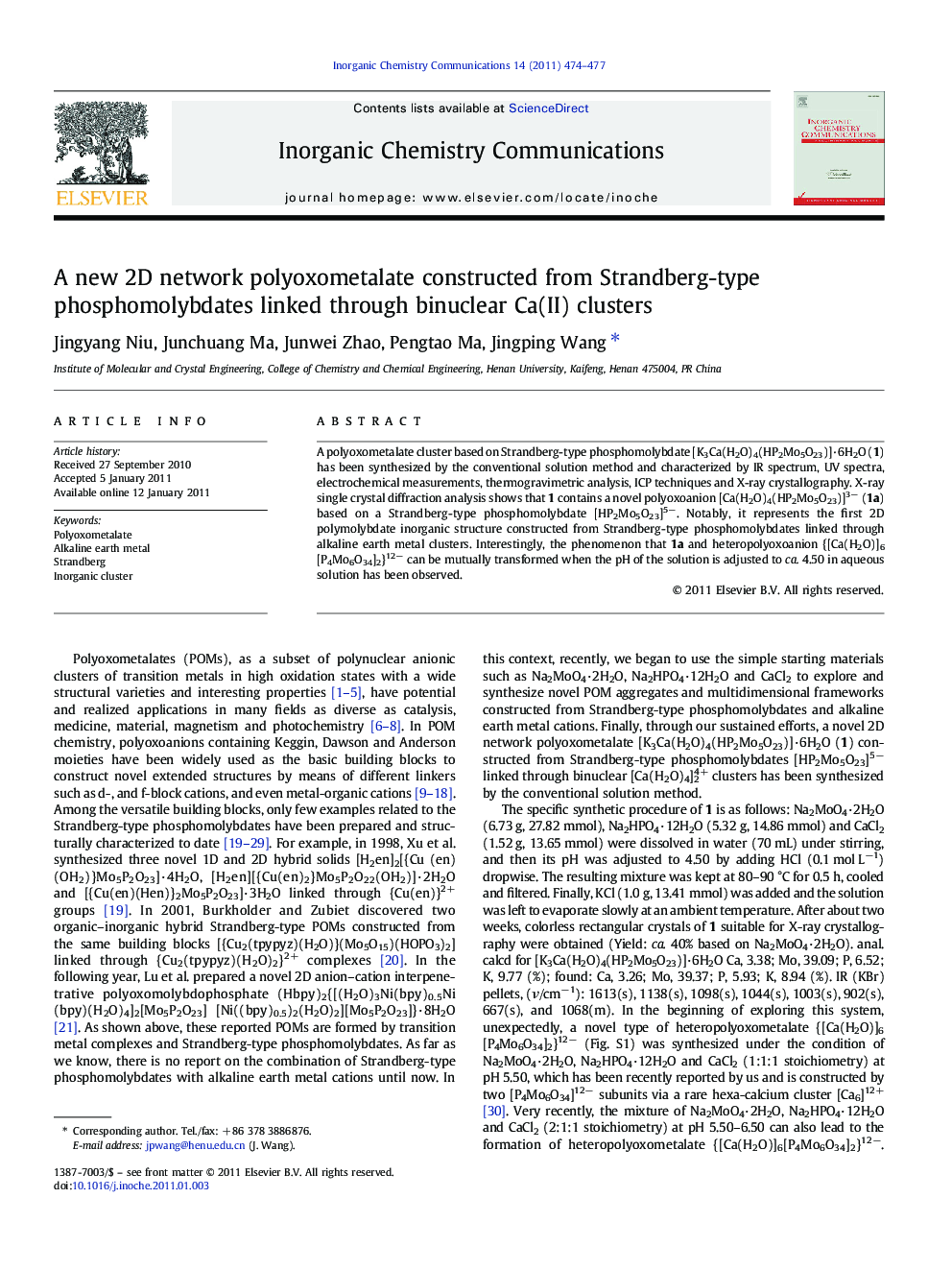| Article ID | Journal | Published Year | Pages | File Type |
|---|---|---|---|---|
| 1304318 | Inorganic Chemistry Communications | 2011 | 4 Pages |
A polyoxometalate cluster based on Strandberg-type phosphomolybdate [K3Ca(H2O)4(HP2Mo5O23)]·6H2O (1) has been synthesized by the conventional solution method and characterized by IR spectrum, UV spectra, electrochemical measurements, thermogravimetric analysis, ICP techniques and X-ray crystallography. X-ray single crystal diffraction analysis shows that 1 contains a novel polyoxoanion [Ca(H2O)4(HP2Mo5O23)]3− (1a) based on a Strandberg-type phosphomolybdate [HP2Mo5O23]5−. Notably, it represents the first 2D polymolybdate inorganic structure constructed from Strandberg-type phosphomolybdates linked through alkaline earth metal clusters. Interestingly, the phenomenon that 1a and heteropolyoxoanion {[Ca(H2O)]6[P4Mo6O34]2}12− can be mutually transformed when the pH of the solution is adjusted to ca. 4.50 in aqueous solution has been observed.
Graphical AbstractA polyoxometalate cluster based on Strandberg-type phosphomolybdate [K3Ca(H2O)4(HP2Mo5O23)]·6H2O has been synthesized by the conventional solution method and characterized by IR spectra, UV spectra, electrochemical measurements, TG analyses and X-ray crystallography. The interesting phenomenon that 1a and heteropolyoxoanion {[Ca(H2O)]6[P4Mo6O34]2}12− can be mutually transformed when the pH of the solution is adjusted to ca. 4.50 in aqueous solution has been observed.Figure optionsDownload full-size imageDownload as PowerPoint slideResearch Highlights► A polyoxometalate cluster based on Strandberg-type phosphomolybdate [K3Ca(H2O)4(HP2Mo5O23)]·6H2O has been synthesized by the conventional solution method and characterized by IR spectra, UV spectra, electrochemical measurements, TG analyse and X-ray crystallography. ► The polyoxometalate represents the first inorganic 2D layer Strandberg-type phosphomolybdate. ► The polyoxometalate enriches the structural diversity of Strandberg-type polyoxometalates. ► The heteropolyoxoanions [Ca(H2O)4(HP2Mo5O23)]3– and {[Ca(H2O)]6[P4Mo6O34]2}12– can be mutually transformed when the pH of solution is adjusted to ca. 4.50 in aqueous solution.
